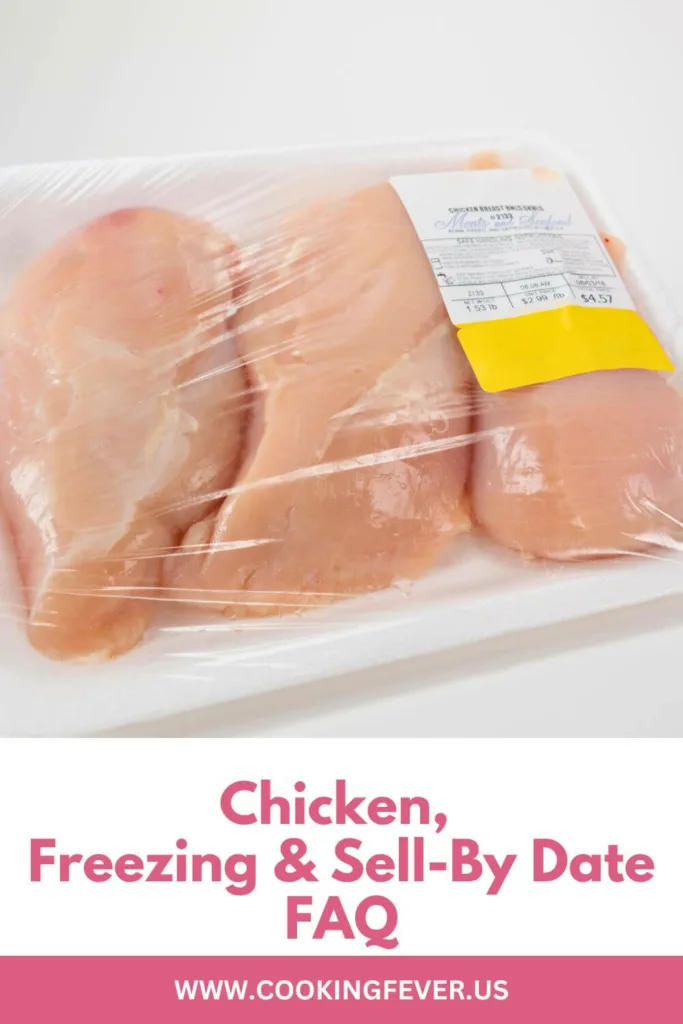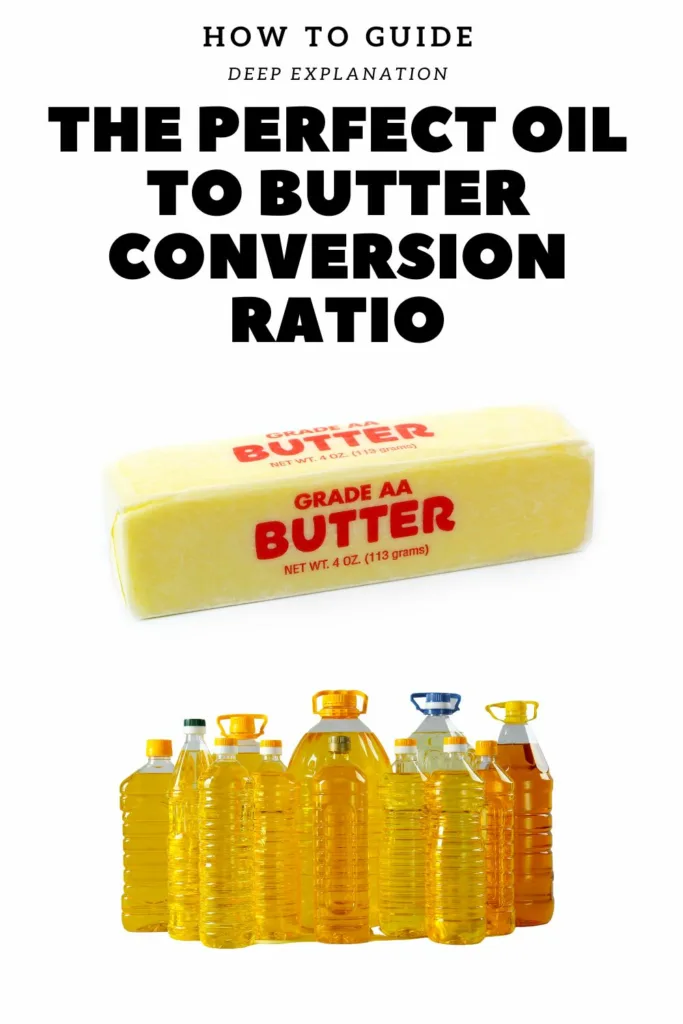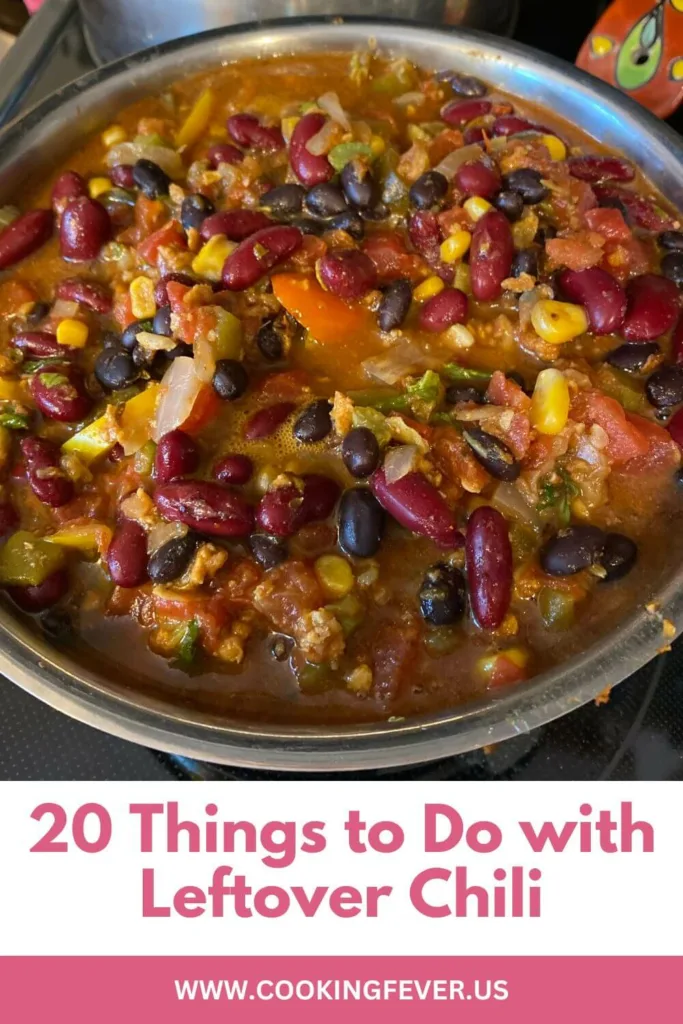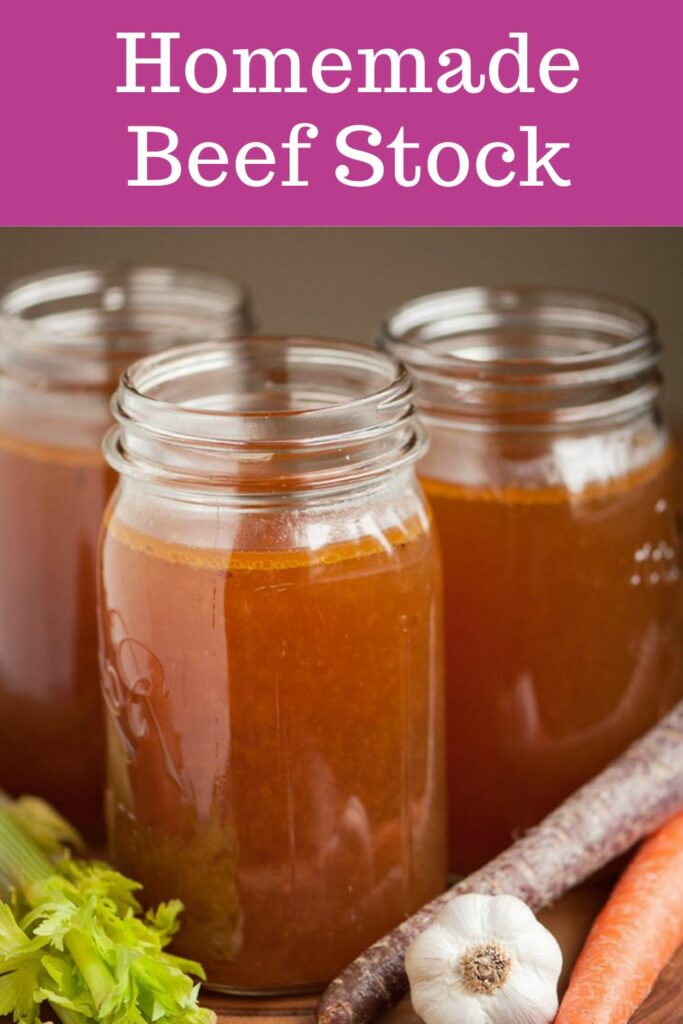When it comes to the sell-by date of chicken, proper storage is key. Raw chicken can usually remain fresh in the refrigerator for an additional 2 days beyond its sell-by date. However, to further prolong its shelf life, freezing is an effective option, allowing raw chicken to be stored for up to 9 months in the freezer.
For cooked chicken, it is advisable to consume it within 3 to 4 days when kept in the refrigerator. If you prefer to extend its longevity, freezing cooked chicken is a viable solution, allowing it to maintain its quality for approximately 4 to 6 months in the freezer. It is important to note that these timeframes are general guidelines and can vary depending on various factors, such as the quality of the chicken and the storage conditions. Therefore, always use your best judgment and follow proper food safety practices to ensure the chicken remains safe to eat.
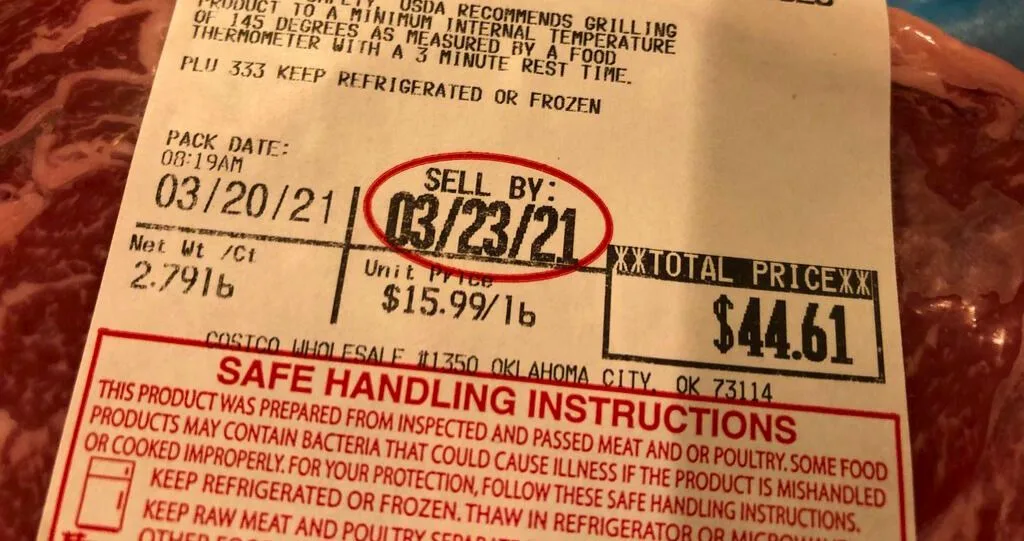
What does the sell-by date mean on raw chicken?
The “sell-by” date found on raw chicken packaging primarily serves as a guideline for retailers rather than consumers. Its purpose is to inform stores about the optimal timeframe during which the chicken should be sold to ensure maximum freshness. The sell-by date is crucial for inventory management and helps stores rotate their stock effectively. It is important to note that the sell-by date is not an expiration date or a safety date.
Consumers can still safely consume chicken beyond the sell-by date, as long as it has been stored correctly in the refrigerator. While the taste and texture of the chicken may gradually deteriorate after the sell-by date, it does not necessarily mean that it is no longer safe to eat. However, it is essential to exercise caution and use your senses to evaluate the chicken’s quality. If the chicken shows any signs of spoilage, such as a foul odor, sliminess, or discoloration, it is best to discard it to prevent any potential foodborne illnesses.
Remember, proper storage practices and maintaining a cold temperature in the refrigerator can help extend the shelf life of raw chicken and ensure its safety for consumption.
How long is chicken good in the fridge after the sell-by date?
Once the sell-by date has passed, the freshness and quality of chicken may begin to decline. However, when stored properly in the refrigerator, raw chicken can remain good for up to two days after the sell-by date, and potentially longer. It is important to note that this timeframe can vary depending on factors such as storage conditions and the initial quality of the chicken. It is always recommended to perform a visual and sensory inspection before consuming chicken that has surpassed the sell-by date.
To maximize the shelf life of raw chicken, it is advisable to store it in an airtight container if it has been removed from its original packaging. This helps to maintain its freshness and prevent cross-contamination with other foods in the refrigerator. Additionally, keeping the refrigerator temperature consistently below 40°F (4°C) is essential for food safety and extending the lifespan of perishable items like chicken.
Remember, while the sell-by date provides a general guideline, it is important to trust your senses and use your best judgment when determining the quality and safety of chicken beyond that date. If you notice any signs of spoilage, such as an off odor, sliminess, or discoloration, it is recommended to discard the chicken to avoid any potential risks to your health.
Chicken Sell-by Date vs. Use-by Date

When it comes to chicken, understanding the difference between the sell-by date and the use-by date is important. The sell-by date, also known as the sell-thru date, is primarily intended for store staff as a reference point for determining the last day the store should sell the chicken. It is not a safety date but rather a guideline for inventory management. Typically, the sell-by date is set about one to two days after the chicken is packaged.
On the other hand, the use-by date is provided by some poultry producers to indicate the recommended date for consuming the chicken to enjoy the best quality. This date is typically set three to five days after the chicken is packaged. It is important to note that the use-by date takes into account both safety and quality factors, and consuming the chicken before this date ensures optimal freshness and taste.
Both the sell-by date and the use-by date serve different purposes. While the sell-by date is primarily for the store’s inventory management, the use-by date is more focused on the consumer’s experience. It is crucial to pay attention to these dates and follow them to maintain the quality and safety of the chicken. However, it’s also essential to use your senses and evaluate the chicken’s condition before consuming it, even if it is within the recommended dates.
Remember, proper storage and handling practices, such as refrigerating chicken promptly and maintaining a cold temperature, play a significant role in extending its freshness and maintaining its quality beyond the sell-by and use-by dates.
How to tell if chicken is bad?
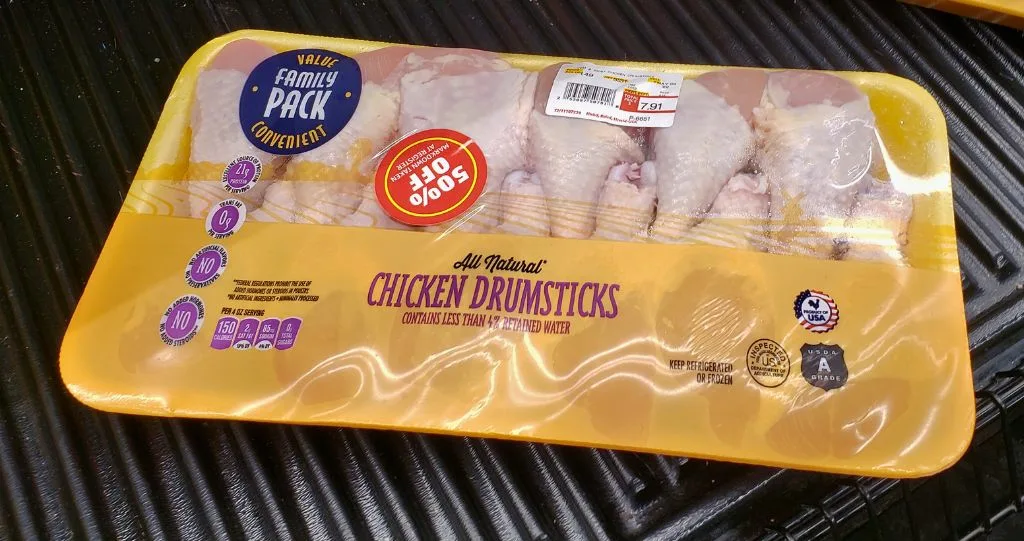
Identifying whether raw chicken has gone bad is crucial for ensuring food safety. By examining its appearance, texture, and smell, you can determine if the chicken is still good to consume.
1. Consider the chicken’s appearance. Fresh raw chicken should have a light pink color. If it starts to appear gray, yellow, or green, it is likely spoiled and should be discarded.
2. Assess the texture of the chicken. Fresh raw chicken should have a slightly glossy appearance. If it feels slimy or sticky to the touch, it is a clear indication that it has gone bad and should not be consumed.
3. Rely on your sense of smell. Fresh raw chicken should have a mild odor or no smell at all. However, spoiled chicken will emit a foul, sour, or unpleasant smell. If you detect any unpleasant odors, it is best to dispose of the chicken.
If there are obvious signs of spoilage, do not consume the chicken. Even if there are no clear indicators, if you still have doubts about the chicken’s freshness, it is safer to err on the side of caution. Spoiled chicken can harbor harmful bacteria such as salmonella, which can lead to food poisoning.
Remember, maintaining food safety is paramount. When unsure about the quality of raw chicken, it is always better to discard it rather than risk potential illness.
Can you freeze raw chicken?
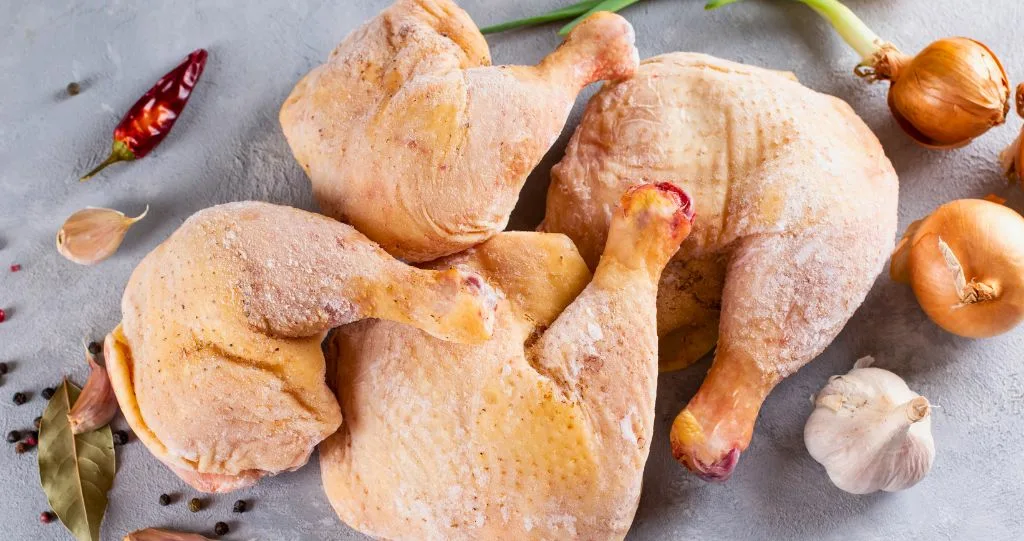
Absolutely, raw chicken can be safely frozen for an extended period. Freezing chicken is a convenient way to preserve it and extend its shelf life.
When freezing raw chicken, it is crucial to use proper packaging to maintain its quality. Airtight packaging, such as good quality freezer bags, helps prevent freezer burn. It is recommended to label the bag with the freezing date for reference. For even better results, vacuum-sealing the chicken can further preserve its nutrients and freshness, allowing it to last even longer in the freezer.
When it comes to using frozen chicken, there are a couple of options. Thawed chicken should be cooked within 1 to 2 days to ensure optimal food safety. Alternatively, you can cook the chicken directly from its frozen state. It may require slightly longer cooking times, but it is a convenient option when you need to prepare a meal quickly.
By freezing raw chicken, you can effectively store it for up to 9 months, maintaining its quality and minimizing food waste. Freezing is an excellent way to ensure you have a supply of chicken on hand for future use while retaining its flavor and nutritional value.
Can you freeze cooked chicken?

Certainly, cooked chicken can be safely frozen, providing you with convenient options for meal planning and reducing food waste. When properly stored, frozen cooked chicken can maintain its quality for approximately 4 to 6 months, depending on the cut and initial preparation.
To freeze cooked chicken, it is essential to use suitable storage containers or freezer bags that provide an airtight seal. This helps protect the chicken from freezer burn and maintain its flavor and texture. Vacuum-sealing the cooked chicken can further extend its shelf life. Remember to label the container or bag with the freezing date to keep track of its storage time.
When you’re ready to use the frozen cooked chicken, transfer it to the refrigerator and allow it to thaw overnight. Thawing in the refrigerator ensures a safe and gradual thawing process. Once thawed, the cooked chicken can be reheated using methods such as the microwave or oven, depending on your preference.
By freezing cooked chicken, you can preserve its quality and have a convenient protein option readily available for future meals. Just ensure proper storage, labeling, and safe thawing methods to maximize food safety and enjoyment.
